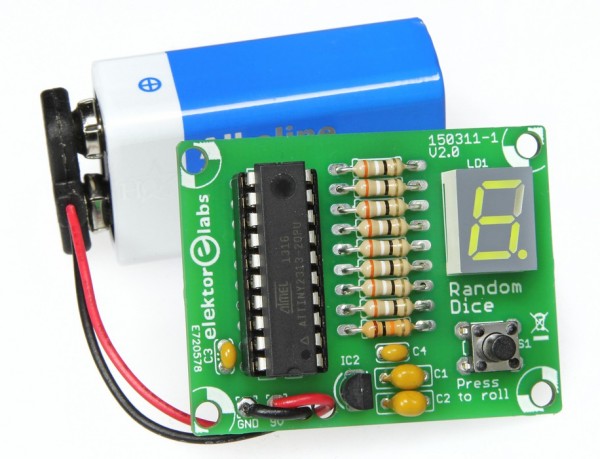Final assembly: After assembling all the components on the board make a close inspection of all the joints. Lead/tin solder produces shiny joints; any crazing is an indicator of a dry joint, check for missing solder or solder bridges shorting two tracks together. It’s also worth double checking battery connection polarity and the IC socket orientation. The finished board should look like Figure 3. Now you can connect up the battery but don’t plug in IC1 just yet. The decimal point LED will light up to show that power is available to the board. Should the LED not light then you can begin with what is any engineer’s favorite pastime — hardware debugging. Once everything is okay you can carry on: Disconnect the battery.
Orientate the pre-programmed IC1 over its socket ensuring that the notch in the package indicating pin #1 is nearest to the battery wire connection point and not the other way round. Check that the package leads line up with all their positions in the socket. Apply light pressure to correct the position of any lead. Now carefully apply pressure evenly to the top of the package using two fingers until the IC is inserted. This may require some force.
Reconnect the battery.
For more detail: Tiny-Dice: Electronic Dice Using an ATtiny2313


